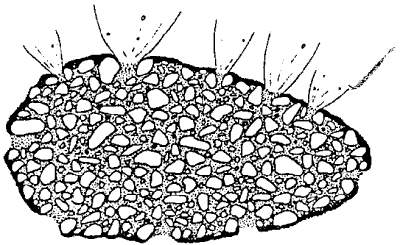 |
Science Frontiers ONLINE No. 49: Jan-Feb 1987 |
|
|
Halley's confounding fireworks
"Serendipitous discovery in science so often comes as a surprise, even when it might reasonably be expected. Such was the case with Comet Halley in the wake of an observation program that dwarfed all preceding efforts. The surprises included sudden outbursts in the presumably steady vaporization of its icy nucleus and a periodic, complex pulsation of the comet's brightness. Whether this pulsation reflects the rotation of the nucleus, or some still unimagined phenomenon became a controversial focus of the recent meeting on the Exploration of Halley's Comet in Heidelberg."
Some of the data presented and some of the attendees at this conference supported a rotational period of 2.2 days; others favored 7.4 days; a few liked a 2.2-day period with a 7.4-day wobble superimposed.
(Kerr, Richard A.; "Halley's Confounding Fireworks," Science, 234:1196, 1986. Also: Campbell, Philip; "How Fast Does Halley Spin?" Nature, 324:213, 1986.)
Halley's fireworks (visible outbursts) have also stimulated comet model-making. The latest is an icy-glue construction of sorts. See the accompanying figure and the accurate but not-particularlyenlightening caption.
(Gombosi, Tamas I., and Houpis, Harry L.F.; "An Icy-Glue Model of Cometary Nuclei," Nature, 324:43, 1986.)
Reference. Cometary outbursts are cataloged in ACO20 on The Sun and Solar System Debris. For information on this book, visit: here.
 | A section through the icy-glue model of cometary nucleus, showing active and inactive micropores, small boulders, and the outer dust covering. |